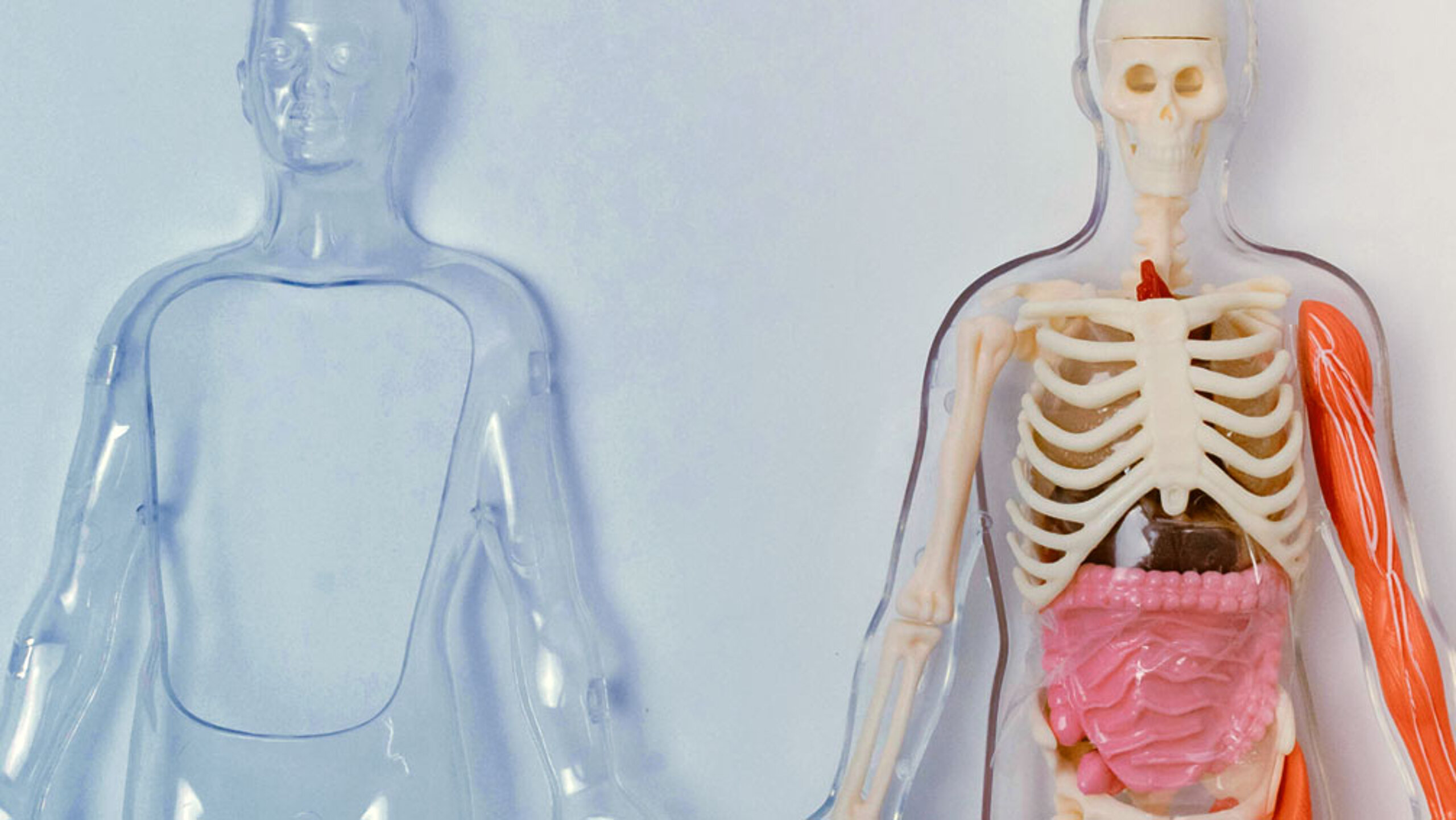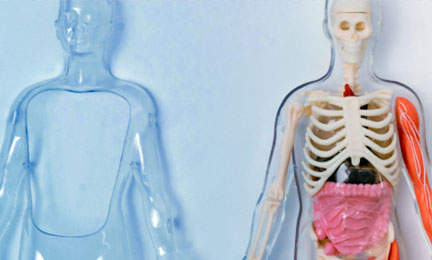From Lupus to Alzheimer’s: Six applications of peptide microarrays in autoimmunity research
Article

Autoimmunity is increasingly being recognized as a hidden driver of diseases once thought to arise from unrelated causes. From sudden infant death syndrome (SIDS) to neurodegenerative conditions like Alzheimer’s, researchers are uncovering how the body’s own antibodies can misfire, targeting essential proteins and sparking life-threatening consequences. Thanks to advances in high-throughput screening tools like peptide and protein microarrays, scientists can now map these antibody interactions at an unprecedented resolution, linking them to specific epitopes and disease pathways.
This article highlights six of these recent breakthroughs, showing how peptide and protein microarray technologies are reshaping the way we study and potentially treat autoimmune-linked diseases.
1. Identifying anti-TRPV2 autoantibodies as a biomarker candidate for SIDS
Overview: A study led by researchers from the University of Bern, Switzerland, has linked sudden infant death syndrome to an autoimmune mechanism involving the TRPV2 ion channel. Researchers analyzed serum from 47 infants, based on three groups: deaths from SIDS, deaths from accidental suffocation, and healthy controls. They found that anti-TRPV2 autoantibodies were present in 84.6% of SIDS cases vs. 50% in suffocation and 25% in controls. The autoantibody binds to a specific external part of the TRPV2 channel that helps control calcium flow into heart cells, an essential process for keeping the heartbeat stable. In a mouse model, maternal immunization with TRPV2 peptides led to transplacental antibody transfer and a 5- to 10-fold increase in neonatal death, without structural heart disease. Electrophysiological tests showed impaired TRPV2 currents and disrupted cardiac function, supporting a causative role.
Why this matters: SIDS is typically diagnosed when no other cause of death can be found, making its underlying biology hard to pinpoint. This study introduces autoimmunity as a novel cause, positioning anti-TRPV2 autoantibodies as a biomarker to identify at-risk infants. It also opens the door for therapeutic strategies like antibody neutralization. The findings may help distinguish biological causes of death from mechanical ones in forensic investigations and encourage larger-scale screening efforts.
How peptide microarrays were used: Researchers used PEPperCHIP® Peptide Microarrays to screen for autoantibodies against 100 cardiac ion channel epitopes. This high-throughput, epitope-specific platform was crucial in identifying TRPV2 as the only antibody significantly linked to SIDS. The data were normalized and analyzed using advanced statistical models, revealing TRPV2’s unique immunosignature in affected infants.
Reference: Maguy et al. Anti-TRPV2 Autoantibody Linked to Sudden Infant Death Syndrome. Circulation. (2025 July). https://doi.org/10.1161/circulationaha.125.073748
2. Uncovering a hidden EBV link in children with uveitis
Overview: Scientists from the University of Utrecht in the Netherlands found a potential autoimmune link between Epstein–Barr virus (EBV) and paediatric non-infectious uveitis, a sight-threatening inflammatory eye disease. Using PEPperPRINT’s peptide microarray, the researchers profiled antibodies in the eye fluid (aqueous humour) and blood of 18 children with uveitis and 6 controls. They discovered significantly higher levels of IgG antibodies targeting a specific 8-amino acid motif (RRPFFHPV) from EBV’s EBNA-1 protein in the eyes of uveitis patients. This motif was not elevated in blood, suggesting a localized immune response in the eye. The immune response was especially strong in children who carry the HLA-DRB1*15:01 risk gene variant.
Why this matters: Non-infectious uveitis has long been seen as an immune disorder without microbial involvement. However, this study suggests that prior EBV infection could help trigger autoimmunity in the eye, especially in genetically susceptible individuals. The identified EBV epitope is the same one linked to multiple sclerosis (MS), another autoimmune disease with a strong HLA-DRB1*15:01 association and overlapping features like optic nerve inflammation.
This finding provides a biological link between EBV and paediatric uveitis and may explain the co-occurrence of uveitis in MS patients. It also raises potential for new preventive strategies, such as EBV vaccination or vitamin D supplementation to reduce antibody levels.
How peptide microarrays were used: Researchers used PEPperCHIP® Infectious Disease Epitope Microarrays to screen IgG responses against 3,760 linear B-cell epitopes from 196 pathogens. This high-throughput, fine-resolution tool enabled them to detect specific epitope-level antibody responses in both serum and eye fluid. By clustering similar peptides and analyzing enrichment, they identified the RRPFFHPV motif in EBNA-1 as significantly overrepresented in uveitis patients’ eye fluid, especially in those with the HLA-DRB1*15:01 genotype.
Reference: Hendrikse et al. Paediatric autoimmune uveitis is associated with intraocular antibodies against Epstein–Barr virus Nuclear Antigen 1 (EBNA-1). eBioMedicine. (2025 May). https://doi.org/10.1016/j.ebiom.2025.105681
3. Mapping C-reactive protein autoantibody hotspots linked to lupus activity
Overview: A study from Linköping University in Sweden investigated how IgG autoantibodies in systemic lupus erythematosus (SLE) patients target specific linear epitopes on the full-length monomeric C-reactive protein (CRP), a key molecule in innate immunity. Using sera from 42 SLE patients and 11 healthy donors, researchers mapped 11 unique epitopes, five of which were exclusive to SLE. Certain epitopes, notably SEIL⁸⁰–⁸³ and DIGN¹⁵⁵–¹⁵⁸, correlated with disease activity and classical complement activation. One peptide region, CRP⁷²–⁸⁶, was synthesized and shown to inhibit neutrophil oxidative burst and chemotaxis in vitro, suggesting immunomodulatory potential.
Why this matters: Autoantibodies against CRP have long been observed in SLE but without clarity on their specific binding targets or functional consequences. This study advances the field by identifying linear epitope “hotspots” across the CRP sequence and correlating them with clinical disease markers like antiphospholipid antibodies and complement function. The results suggest that anti-CRP antibodies may not be a monolithic entity but a collection of epitope-specific variants with different pathogenic or regulatory effects. Understanding these specific interactions opens new avenues for biomarker development and immunomodulatory therapies in autoimmune diseases like SLE.
How peptide microarrays were used: PEPperCHIP® Custom Peptide Microarrays from PEPperPRINT were instrumental in mapping antibody-binding sites. The full CRP monomer sequence was synthesized as 15 amino acid peptides with a peptide-peptide overlap of 14 amino acids and printed onto glass slides. These microarrays were incubated with patient sera to detect IgG binding across CRP’s linear sequence. This high-resolution epitope mapping enabled the identification of both shared and SLE-specific antibody targets, setting the stage for functional testing of one key epitope, CRP⁷²–⁸⁶.
Reference: Karlsson, et al. Mapping autoantibody targets of full-length C-reactive protein in systemic lupus erythematosus: importance for neutrophil function and classical complement activation. Frontiers in Immunology. (2025 May). https://doi.org/10.3389/fimmu.2025.1578372
4. Revealing autoimmune targets in sensory neuronopathy using protein microarrays
Overview: A study led by scientists from Université Claude Bernard, in Lyon, France, applied a systematic analysis of autoantibodies to uncover how the immune system is involved in autoimmune sensory neuronopathies (SNN). Researchers analyzed blood serum from 131 individuals using protein microarrays to profile antibodies targeting human proteins, particularly those linked to immune pathways. Results showed that patients with autoimmune SNN had a significantly broader antibody response against proteins of the innate and adaptive immune system – including cytokines like IFN-γ and IL-6 – compared to healthy controls or other neuropathy types. Validation in an independent patient cohort confirmed these findings.
Why this matters: SNN is a rare neurological disorder involving damage to sensory neurons, often driven by immune dysfunction. While previous studies hinted at cellular immunity, this work reveals a widespread humoral immune response, with autoantibodies attacking key immune regulatory proteins. Notably, the study found immune reactivity was strongest in SNN patients positive for anti-FGFR3 antibodies. This shifts the understanding of SNN pathogenesis and supports the idea that immune profiling can distinguish disease subtypes (e.g., FGFR3-positive vs. AGO-positive patients). The findings also overlap with pathways seen in autoimmune diseases like Sjögren’s syndrome, suggesting shared mechanisms. Overall, this research advances the field by providing a molecular fingerprint of immune dysregulation in SNN, opening doors for better diagnosis and targeted therapies.
How microarrays were used: PEPperPRINT, using HuProt™ human proteome microarrays from CDI Labs, played a crucial role in this discovery. This high-throughput protein microarray contains over 17,000 human proteins (since updated to over 21,000 proteins), covering over 81% of human proteins in each major functional category of the proteome. After applying sera from SNN patients to the microarrays, the bound IgG antibodies were detected and quantified. The resulting data revealed which proteins were most frequently targeted by the patients’ antibodies. These patterns were compared across patient and control groups to identify statistically significant overrepresentations.
Reference: Moritz et al. The antibody repertoire of autoimmune sensory neuronopathies targets pathways of the innate and adaptive immune system. An autoantigenomic approach. Journal of Translational Autoimmunity. (2025 January). https://doi.org/10.1016/j.jtauto.2025.100277
5. Finding an EBV antibody marker that signals Alzheimer’s risk in women
Overview: A team of researchers from Korea identified a potential female-specific risk marker for Alzheimer’s disease (AD) by analyzing how antibodies interact with viral proteins. Using high-resolution epitope microarrays, researchers found that a specific antibody, anti-DG#29 IgG, which targets a region of the Epstein-Barr virus (EBV) nuclear antigen 1 (EBNA1), was significantly reduced in women with AD compared to controls. This reduction was not observed in men. Additional analysis showed that women with low levels of this antibody had up to 8.7 times higher odds of developing AD, especially when recent EBV reactivation was also present.
Why this matters: Alzheimer’s is a complex disease with unclear triggers. Recent hypotheses implicate immune dysregulation and chronic infections. This study builds on that by linking EBV, a common herpesvirus, to AD risk, but in a sex-specific way. The finding adds a novel biomarker (anti-DG#29 IgG) to the landscape of AD risk assessment and supports the theory that viral reactivation, particularly in women, may contribute to neurodegeneration. This work could lead to earlier detection strategies or targeted interventions based on immune profiling and sex-specific biomarkers.
How peptide microarrays were used: Researchers employed PEPperPRINT’s high-density peptide microarrays to screen 3,359 linear B-cell epitopes, including those from autoimmune and viral antigens. This epitope profiling allowed them to detect downregulation of the anti-DG#29 IgG antibody in AD patients. The microarray’s high sensitivity and specificity enabled the discovery of subtle, disease-specific changes in antibody levels, crucial for uncovering this sex-dependent biomarker of AD risk linked to EBNA1.
Reference: Sim et al. Alzheimer's disease risk associated with changes in Epstein-Barr virus nuclear antigen 1-specific epitope targeting antibody levels. Journal of Infection and Public Health. (2024 July).
https://doi.org/10.1016/j.jiph.2024.05.050
6. Linking citrullination to autoimmune diseases
Overview: Scientists at the University of Copenhagen, in Denmark, have generated a comprehensive, quantitative atlas of protein citrullination, focusing on over 14,000 citrullination sites identified in leukemia-derived HL60 cells differentiated into neutrophil-like cells. It highlights the PADI4 enzyme as a critical player in regulating histone modifications and immune function. These findings have implications for understanding autoimmune diseases and provide potential targets for therapeutic intervention.
Why this matters: Citrullination is a pivotal post-translational modification linked to diseases such as rheumatoid arthritis, neurodegeneration, and cancer. This research utilized advanced proteomics and mass spectrometry to map citrullination sites with high precision, revealing the extensive role of PADI4 in regulating both histones and non-histone proteins. This work opens new avenues for therapeutic strategies targeting PADI4 in autoimmune diseases.
How peptide microarrays were used: PEPperPRINT microarrays played a crucial role in validating antibody reactivity against citrullinated peptides. These microarrays were used to study synovial fluid from individuals with rheumatoid arthritis, distinguishing between different antibody profiles. This, in conjunction with mass spectrometry, helped to connect biochemical modifications with clinical relevance, enhancing the translational impact of the research.
Reference: Rebak et al. A quantitative and site-specific atlas of the citrullinome reveals widespread existence of citrullination and insights into PADI4 substrates. Nature Structural & Molecular Biology (2024): 1-19.
https://doi.org/10.1038/s41594-024-01214-9
How peptide microarrays can support your autoimmune disease research
With unmatched precision, flexibility, and throughput, PEPperPRINT helps researchers unravel the complex antibody responses that drive autoimmunity. By mapping epitopes, profiling autoantibody repertoires, and linking immune signatures to disease activity, peptide microarrays enable faster and deeper insights into autoimmune mechanisms.
Whether you are identifying novel biomarkers for early diagnosis, stratifying patients by disease subtype, or uncovering therapeutic targets, PEPperPRINT’s peptide microarray platform delivers the high-resolution data you need to translate discovery into clinical impact.
Contact PEPperPRINT today to explore how peptide microarrays can accelerate your autoimmune disease research.

